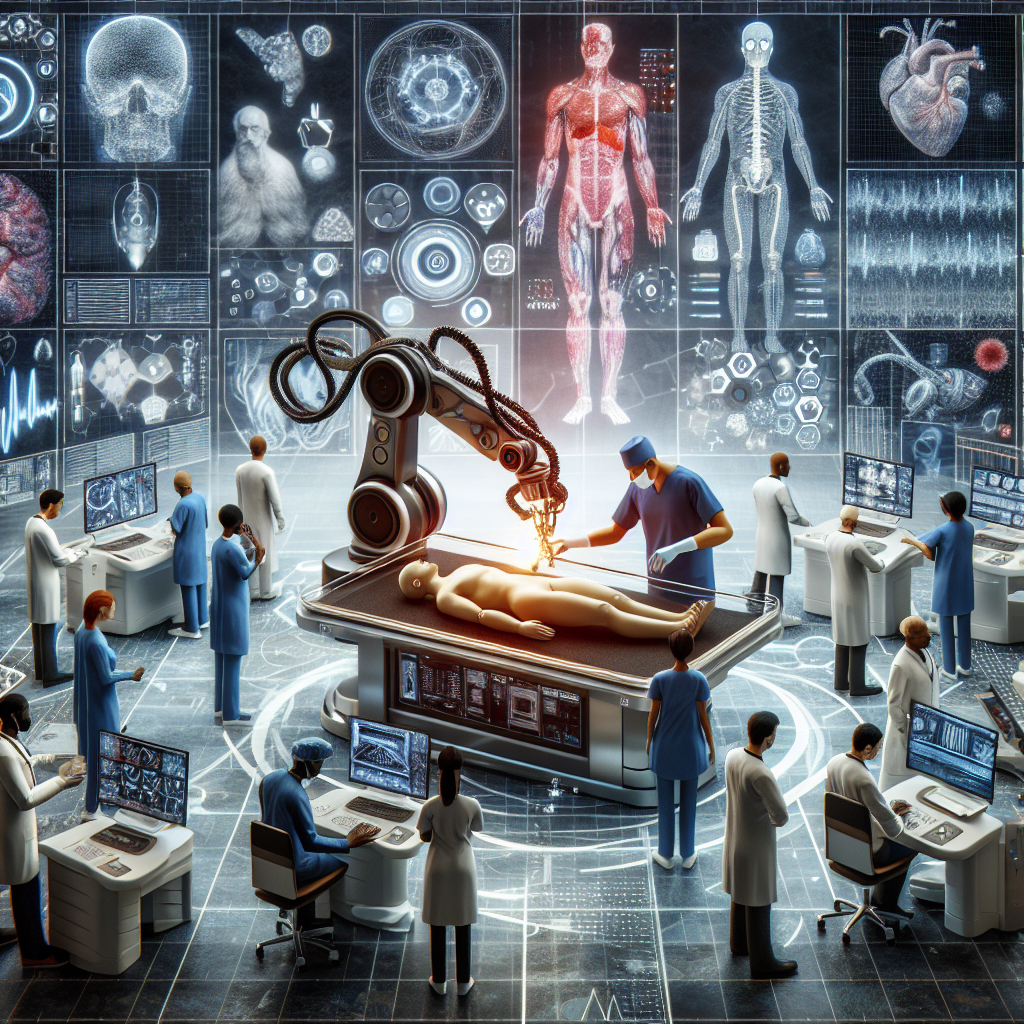Revolutionizing Healthcare: The Future Applications of Robotics in Medicine
The field of healthcare has seen tremendous advancements in recent years, with technology playing a crucial role in transforming the way medical professionals diagnose, treat, and care for patients. One of the most exciting developments in this rapidly evolving landscape is the integration of robotics in medicine. From surgical robots to assistive devices, the potential applications of robotics in healthcare are vast and promising. In this article, we will explore the future of robotics in medicine and how it is revolutionizing the way healthcare is delivered.
Robotic Surgery: Advancing Precision and Minimally Invasive Procedures
One of the most significant contributions of robotics in medicine is in the field of surgery. Robotic surgical systems, such as the da Vinci Surgical System, have been used in a wide range of procedures, from cardiac surgery to gynecology. These advanced robots provide surgeons with enhanced precision and control, allowing for more precise incisions and suturing, ultimately leading to better outcomes for patients. Additionally, robotic surgery is often less invasive than traditional surgery, resulting in reduced pain, shorter recovery times, and fewer complications.
In the future, robotic surgery is expected to become even more sophisticated, with the development of new technologies that can perform complex procedures with even greater precision. For example, researchers are working on miniaturized robots that can navigate through the body to deliver targeted treatment to specific areas, such as tumors. These advancements have the potential to revolutionize the way surgery is performed, making it safer, more efficient, and more effective.
Rehabilitation and Assistive Devices: Enhancing Quality of Life for Patients
Robotics is also playing a vital role in rehabilitation and assistive devices for patients with disabilities or injuries. Robotic exoskeletons, for example, are used to help patients regain mobility and strength after a stroke or spinal cord injury. These wearable robots provide external support and assistance in movement, helping patients to regain independence and improve their quality of life.
Similarly, robotic prosthetics are revolutionizing the field of orthopedics, allowing amputees to regain function and mobility with advanced artificial limbs. These prosthetics are equipped with sensors and artificial intelligence that enable them to adapt and respond to the user’s movements, providing a more natural and intuitive experience.
In the future, we can expect to see even more innovations in this area, with the development of personalized and customizable robotic devices that can be tailored to meet the specific needs of individual patients. These devices will not only improve the lives of patients with disabilities but also empower them to lead more independent and fulfilling lives.
Telemedicine and Remote Healthcare: Connecting Patients and Providers
Another exciting application of robotics in medicine is in the field of telemedicine and remote healthcare. With the advancement of robotics and artificial intelligence, healthcare providers can now offer remote consultations, diagnosis, and monitoring to patients in remote or underserved areas. Robotic telepresence devices, for example, can be used to provide virtual visits with healthcare professionals, allowing patients to receive care without having to travel long distances.
Additionally, robotic devices can be used to deliver medication, monitor vital signs, and provide support to patients in their own homes. This not only improves access to healthcare for patients in remote areas but also reduces the burden on healthcare facilities and providers, leading to more efficient and cost-effective care.
FAQs:
Q: Are robots replacing human healthcare professionals?
A: While robots are playing an increasingly important role in healthcare, they are not replacing human healthcare professionals. Robotic systems are designed to assist and augment the capabilities of healthcare providers, enabling them to deliver better care to patients.
Q: Are robotic surgeries safe?
A: Robotic surgeries are generally considered safe, with lower rates of complications and faster recovery times compared to traditional surgeries. However, like any medical procedure, there are risks involved, and patients should discuss the potential benefits and risks with their healthcare provider.
Q: How expensive are robotic procedures?
A: Robotic procedures can be more expensive than traditional surgeries, due to the cost of the equipment and training required. However, the long-term benefits, such as reduced hospital stays and recovery times, can offset some of these costs.
In conclusion, the future of robotics in medicine is bright and full of potential. With advancements in surgical robots, assistive devices, and telemedicine, robotics is revolutionizing the way healthcare is delivered, making it safer, more efficient, and more accessible for patients. As we continue to explore and develop new technologies, the possibilities for robotics in medicine are endless, promising to transform the field of healthcare for years to come.
